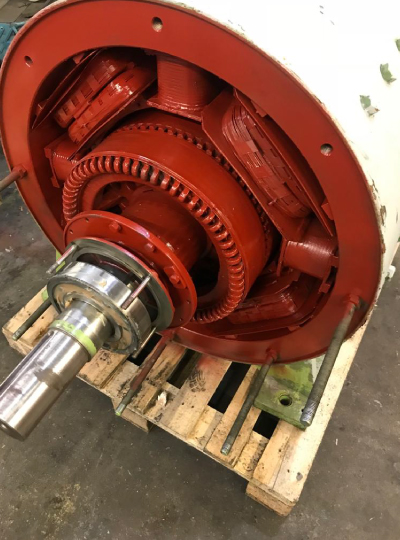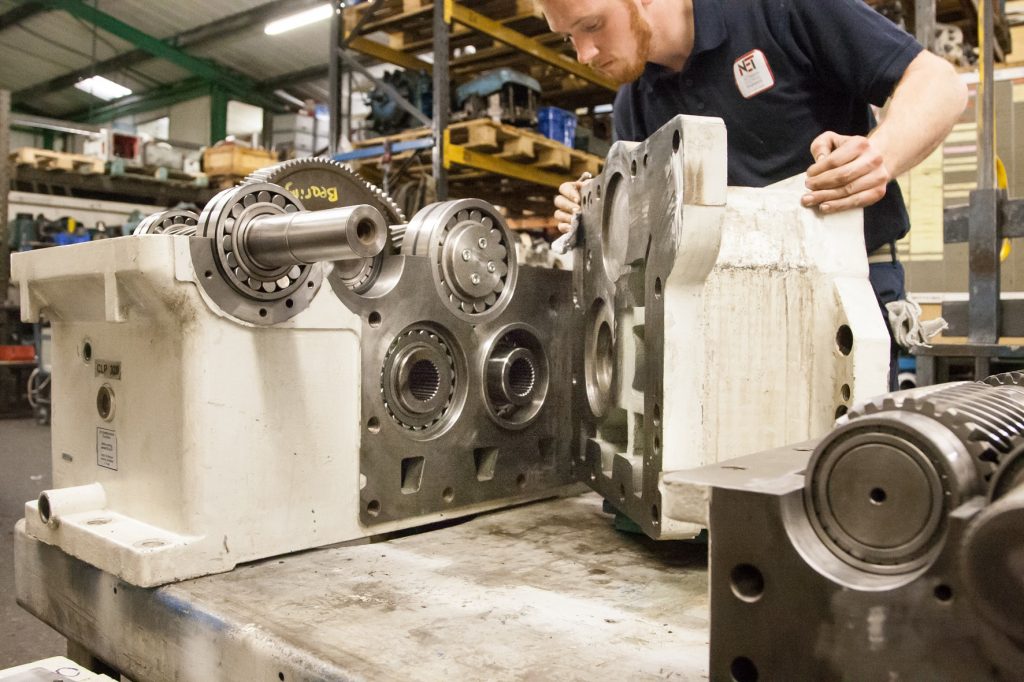Emergency fan balancing returns bakery to full productivity within hours
A large industrial-scale bakery in South Wales, which is part of a national bakery chain, runs round-the-clock production to supply the major supermarket chains with various bakery products. The bakery relies on a large extraction fan, with a diameter of 900mm at 300mm deep, to maintain optimum production conditions and a safe working environment. The fan unit had suffered a collapsed bearing on the shaft, damaging the fins of the impeller. Local engineers were able to carry out the repair, but they didn’t have the capability to balance the fan.
Like all rotating mechanical equipment, a fan has to be balanced to ensure true rotation. A deviation of just several grams of weight can move a fan out balance, which can be caused by damage or as a result of a repair. The consequence of an unbalanced fan includes noise and vibration, reducing the effectiveness of operation. More seriously, vibration will damage bearings and the motor driving it, as well as potentially causing structural stress to adjoining machinery.
Balancing within 24 hours
Initial repair of the fan’s collapsed bearing pushed the balancing task into out-of-hours service. With round-the-clock production, the bakery needed to minimise downtime and return to full capacity as soon as possible in order to fulfil its obligations to its high-volume customers.
The bakery has a partnership with Rotamec because of its 24 hours a day, 365 days a year repair or replacement service. After delivery to Rotamec’s local Pontypool branch, the fan was expedited by courier to Rotamec’s Cheddar headquarters. Together with Covelec in Leicester, now part of the Rotamec Group, Rotamec’s Cheddar service centre includes full capability to balance all sizes of rotating mechanical equipment.
The first stage of balancing is to clean the fan, both to remove debris that could be stuck fast and impact the balance, as well as to uncover any defects that could affect fan operation and true rotation. Defects such as cracks to the fins or impairment of the fan’s bore might require repair and welding, but in this case, the fan was in good condition.
Precision balancing
At the next stage, the fan is installed onto the balancing machine and the appropriately sized shaft. As part of the capability to balance virtually any size and weight of fan, for unusual diameter bores Rotamec can machine a new shaft on-site, within the 24 hour service period, to ensure a full balancing test.
A fan requires two plane balancing that takes into account both the front and rear of the fan. This dynamic balancing process involves the differing masses to relocate the centre line towards the fan’s true axis. Fan specification data is entered into the balancing machine, which is then brought up to operating speed, in this case was 1,500rpm. The machine’s sensors, including analysis of vibration through the bearing unit, provide feedback on the angle, plus the amount of weight required to be added, as well as its position, in order to achieve true balance.
Depending on the size of the fan and its material, weight can then be added or removed. This could be less than 10g or up to 20g or more. As the bakery’s fan was constructed from mild steel, steel weights were welded on at the required points. This process requires precision as excess weld adds to the mass, which can pull the fan back out of balance, and a grinder can be used to shave off any excess.
Accuracy and speed
After weight has been added, the fan is placed back onto the balancing machine, which after running again, provides the tolerance figure. According to the ISO grade of balancing, which takes into account the mass and operational speed, a fan is in category G 6.3, which allows a maximum vibration velocity of just 6.3 mm/s. Exceeding this figure for higher mass items like fans can cause structural stress, leading to wider issues, as well as damage to the fan itself, as well as the motor.
In weight terms, this gave a tolerance for the bakery’s fan of 4g, however the practice at Rotamec is to achieve as close as possible to the set point. With additional precise adjustment, tolerance for the fan was finally reduced to 0.5g to ensure optimum operational performance. The task was completed in around 90 minutes.
Rotamec returned the fan to the customer within hours of the call out, where it was reinstalled where production was able to recommence. As a result of Rotamec’s fan balancing capabilities and rapid service, downtime and disruption were minimised, enabling the bakery to achieve its production run and meet its obligations to its supermarket customers.




